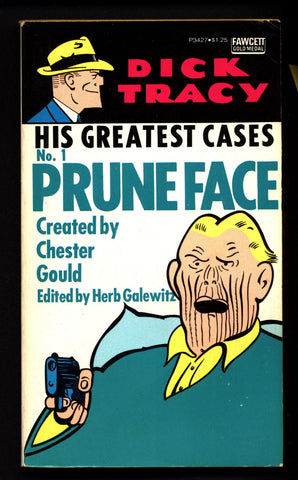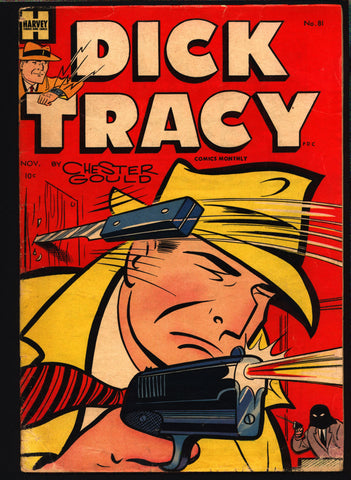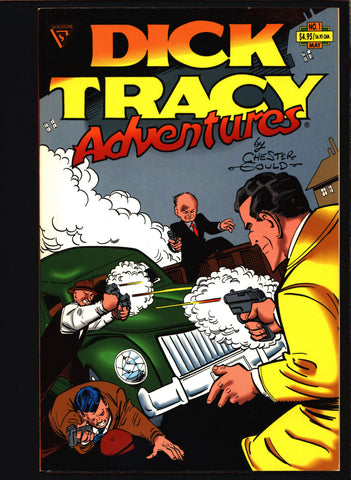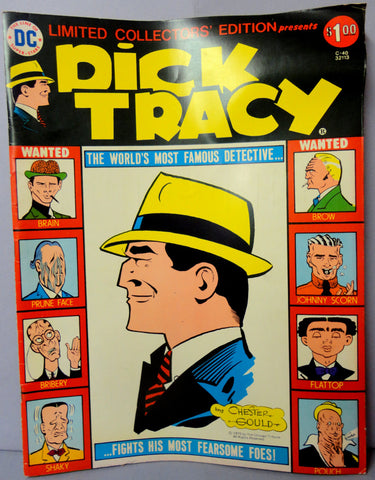FLASH GORDON Alex Raymond Set of all 6 Kitchen Sink Hardcover Color Newspaper Science Fiction Comic Strips Funnies Reprints
$ 275.00
is on back order
Share this product
Kitchen Sink, 1990
Princeton, Wi: Kitchen Sink, 1990.
Book. Illustrated by Alex Raymond.
Set of all 6 Kitchen Sink 1st Edition Hardcover color re-printings in pictorial laminated boards.
Flash Gordon: "Mongo, the Planet of Doom"
Reprints in full color strips 1-82 January 7, 1934 through August 11, 1935
Flash Gordon: Three Against Ming 1935-1937
Flash Gordon: Tides of Battle/No 3 1937-1939
Flash Gordon: Fall of Ming/No 4
Flash Gordon: 1941-1943 Between Worlds at War
Flash Gordon: 1943-1944 Triumph in Tropica
CONDITION is LIKE NEW...FINE or MUCH BETTER with very minor surface wear from being read, handled, stored & moved. Most volumes are actually in UNREAD condition. Books are pristine, solid and tight. Please refer to scanned images... they truly are worth a thousand words.
..........
QUALITY COMICS AMERICA has been, since 1976, a primary source for vintage books, comics, baby boomer toys, ephemera, memorabilia & collectibles. Dedicated to preserving American Pop Art & Pop Culture artifacts
Please "Follow" or Bookmark QUALITY COMICS AMERICA here on etsy because we will be adding hundreds of similar Limited and First Edition books like this one. Don't miss a one by joining us at:
https://www.facebook.com/qualitycomicsamerica
..........
Alexander Gillespie "Alex" Raymond (October 2, 1909 – September 6, 1956)[2] was an American cartoonist, best known for creating Flash Gordon for King Features in 1934. The strip was subsequently adapted into many other media, from a series of movie serials (1936–1940) to a 1970s television series and a 1980 film.
Raymond's father encouraged his love of drawing from an early age, leading him to become an assistant illustrator in the early 1930s on strips such as Tillie the Toiler and Tim Tyler's Luck. Towards the end of 1933, Raymond created the epic Flash Gordon science-fiction comic strip to compete with the popular Buck Rogers comic strip and, before long, Flash was the more popular strip of the two. Raymond also worked on the jungle adventure saga Jungle Jim and spy adventure Secret Agent X-9 concurrently with Flash, though his increasing workload caused him to leave Secret Agent X-9 to another artist by 1935. He left the strips in 1944 to join the Marines, saw combat in the Pacific Ocean theater in 1945 and was demobilized in 1946. Upon his return from serving during World War II, Raymond created and illustrated the much-heralded Rip Kirby, a private detective comic strip. In 1956, Raymond was killed in a car crash at the age of 46;[3] he was survived by his wife and five children.
He became known as "the artist's artist"[4] and his much-imitated style can be seen on the many strips he illustrated. Raymond worked from live models furnished by Manhattan's Walter Thornton Agency, as indicated in "Modern Jules Verne," a profile of Raymond published in the Dell Four-Color Flash Gordon #10 (1942), showing how Thornton model Patricia Quinn posed as a character in the strip.
Numerous artists have cited Raymond as an inspiration for their work, including Jack Kirby and Bob Kane. George Lucas cited Raymond as a major influence for Star Wars. He was inducted into the Will Eisner Comic Book Hall of Fame in 1996. Maurice Horn stated that Raymond unquestionably possessed "the most versatile talent" of all the comic strip creators. He has also described his style as "precise, clear, and incisive."[5] Carl Barks described Raymond as a man "who could combine craftsmanship with emotions and all the gimmicks that went into a good adventure strip."[6] Raymond's influence on other cartoonists was considerable during his lifetime and did not diminish after his death.
FLASH GORDON
Towards the end of 1933,[5] King Features asked Raymond to create a Sunday page that could compete with Buck Rogers in the 25th Century, a popular science-fiction adventure strip that had debuted in 1929 and already spawned the rival Brick Bradford in 1933 According to King Features, syndicate president Joe Connolly "gave Raymond an idea ... based on fantastic adventures similar to those of Jules Verne"
Alongside ghostwriter Don Moore,a pulp-fiction veteran, Raymond created the visually sumptuous science-fiction epic comic strip Flash Gordon. The duo also created the "complementary strip, Jungle Jim, an adventurous saga set in South-East Asia", a topper which ran above Flash in some papers Raymond was concurrently illustrating Secret Agent X-9, which premiered January 22, 1934, two weeks after the two other strips.[15] It was Flash Gordon that would outlast the others, quickly "develop[ing] an audience far surpassing" that of Buck Rogers. Flash Gordon, wrote Stephen Becker, "was wittier and moved faster," so "Buck's position as America's favorite sci-fi hero", wrote historian Bill Crouch, Jr., "went down in flames to the artistic lash and spectacle of Alex Raymond's virtuoso artwork." Alex Raymond has stated, "I decided honestly that comic art is an art form in itself. It reflects the life and times more accurately and actually is more artistic than magazine illustration—since it is entirely creative. An illustrator works with camera and models; a comic artist begins with a white sheet of paper and dreams up his own business—he is playwright, director, editor and artist at once."
Debuting on January 7, 1934, Raymond's first Flash strip introduced the "world-famous polo player", improbably roped into a space adventure alongside love-interest Dale Arden and scientist Dr. Hans Zarkov. Transported by rocket to the planet Mongo, "which was about to collide with Earth", the trio "immediately became embroiled in the affairs of Mongo's inhabitants—particularly those of its insidious warlord, Ming", who would become Flash Gordon's nemesis throughout the franchise's many incarnations.
The first Flash Gordon and one from 1936 show how Raymond expanded from the standard layout to larger panels.
Raymond's sensual artwork—for which the artist particularly "studied popular illustrators," including pulp artist Matt Clark, whose work Raymond's male figures particularly evoke—outshone its borders and "attracted far more loyal readers than... [the] rather contrived and unconvincing adventure stories" his work depicted. Raymond swiftly became "among the most highly-regarded—and most imitated—in all of comics" for his work on the weekly strip, with Harvey declaring his work on the strip "a technical virtuosity matched on the comics pages only by Harold Foster in Prince Valiant." Raymond evolved the layout of the strip from a four-tier strip in 1934 to a two-tier strip in 1936, reducing the number of panels but doubling their size. Combining this with a removal of dialogue from speech balloons to captions at the bottom of the panel afforded Raymond the space to create detailed and atmospheric backgrounds. Against these spacious backgrounds, the placement of characters in heroic pose "lent the entire enterprise a mythic air."
Flash Gordon gained a daily strip in 1940, illustrated by Austin Briggs. Raymond left the Sunday strip in 1944 to join the Marines, whereupon the daily strip was cancelled and Briggs assumed Sunday duties, continuing until 1948. Briggs was succeeded on the Sundays by Emanuel "Mac" Raboy, while the daily strip was revised in 1951 by Dan Barry. Barry also took over Sunday duties after Raboy's death in 1967.
(wiki)
..........
More NEET STUFF can be found on etsy by visiting these teams or using the appropriate tags listed below:
COMICS-
https://www.etsy.com/teams/13611/comic-books
https://www.etsy.com/teams/14497/dc-universe
dc comics, marvel comics, justice league, batman, superman, superhero,
https://www.etsy.com/teams/14767/marvel-excelsior
comics, marvel, stan lee, excelsior, comic books,
https://www.etsy.com/teams/15638/geeks-unleashed
geek, nerd, anime, geekery, comic book,
https://www.etsy.com/teams/10185/disneyana
disney, disneyana, mickey mouse,
VINTAGE EPHEMERA:
https://www.etsy.com/teams/11978/got-vintage-shops-team
vintage, antiques, ephemera, gvs team, gotvintage, memorabilia, collectibles,
https://www.etsy.com/teams/15100/rare-vintage-bookspapers
70s, art, book, rare, paper, magazine, photography, graphic.poster,
https://www.etsy.com/teams/13509/vintage-magazine-madness/discuss/15327191/
mag, vmm, weekly, monthly, magazines, periodical,
https://www.etsy.com/teams/10903/vintage-addiction
mid century, promotional, vintage toys, vintage ephemera, vateam, retro,
https://www.etsy.com/teams/7374/vintage-books
vbteam, vintage books, booksellers,
POP CULTURE:
https://www.etsy.com/teams/11695/pop-culture-passion
pop culture, pcp team, pop culture team,
https://www.etsy.com/teams/12802/the-attic
steam punk, music, 1950s-80s inspired, mod, punk rock, rockabilly, psychobilly,
VINTAGE TOY COLLECTIBLES:
https://www.etsy.com/teams/21770/vintage-toys
toy, automobiles, action figures, tin toys, kitsch,
https://www.etsy.com/teams/9399/old-and-cool-stuff









